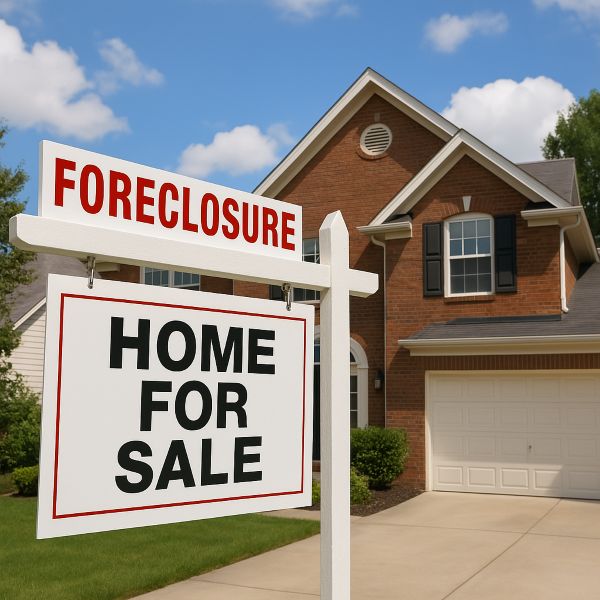Navigating the turbulent waters of foreclosure can feel like an insurmountable challenge for many homeowners. When the threat of losing your home looms large, understanding the role of government assistance becomes a lifeline. In the realm of real estate, where property ownership is both a dream and a significant investment, knowing the resources available to prevent foreclosure is crucial. This comprehensive guide dives into the various government programs designed to support struggling homeowners, offering practical insights and actionable steps to help you safeguard your property. Whether you’re grappling with missed mortgage payments or seeking ways to stabilize your financial footing, this post will illuminate how federal and state initiatives can play a pivotal role in your real estate journey.
Understanding Foreclosure and the Need for Government Support
Foreclosure is a legal process where a lender attempts to recover the balance of a loan from a borrower who has stopped making payments by forcing the sale of the home used as collateral. This process can be devastating, not only stripping families of their homes but also severely impacting their credit and future opportunities in the real estate market. The emotional toll is immense, often leaving individuals feeling helpless. Government assistance programs have emerged as a critical safety net, designed to intervene and provide relief to those at risk. These programs aim to prevent foreclosures by offering financial aid, counseling, and restructuring options for homeowners facing economic hardship (Smith, 2020). Without such interventions, the ripple effects of foreclosure can destabilize entire communities, reducing property values and increasing neighborhood blight.
The need for government support in the real estate sector became especially evident after the 2008 housing crisis, which saw millions of Americans lose their homes. Since then, federal and state governments have prioritized creating mechanisms to protect homeowners, recognizing that stable housing is fundamental to economic recovery and personal well-being. Today, these programs are more accessible than ever, though many remain unaware of their existence or how to apply for them. Let’s explore some of the key government initiatives that can help you navigate foreclosure challenges.
Federal Programs Offering Real Estate Relief
When it comes to federal assistance in the real estate landscape, several programs stand out as vital resources for homeowners facing foreclosure. The U.S. Department of Housing and Urban Development (HUD) plays a central role in providing support through various initiatives. One of the most well-known is the Home Affordable Modification Program (HAMP), which, although no longer accepting new applications, set a precedent for loan modifications by working with lenders to reduce monthly mortgage payments to sustainable levels (HUD, 2021). While HAMP has ended, its legacy continues through other HUD-approved counseling services that connect homeowners with free, expert advice on avoiding foreclosure.
Another significant resource is the Federal Housing Administration (FHA) loan forbearance program, which allows borrowers with FHA-insured mortgages to temporarily pause or reduce payments during financial hardship. This can be a game-changer for those in the real estate market who are struggling due to job loss or unexpected medical expenses. Additionally, the CARES Act, enacted in response to the COVID-19 pandemic, provided foreclosure moratoriums and forbearance options for federally backed mortgages, offering temporary relief to millions of Americans (Johnson, 2022). These federal programs underscore the government’s commitment to stabilizing the housing market and protecting homeowners.
Here are some key federal programs to consider:
- FHA Forbearance: Temporarily pauses or reduces mortgage payments for FHA loan holders facing hardship.
- HUD Counseling Services: Free guidance from certified counselors to explore foreclosure prevention options.
- CARES Act Protections: Offers moratoriums and forbearance for federally backed loans during crises like COVID-19.
- VA Loan Assistance: Special forbearance and modification options for veterans with VA loans.
State-Specific Assistance in the Real Estate Sector
Beyond federal programs, many states offer localized assistance tailored to the unique needs of their residents in the real estate market. These initiatives often complement federal efforts by addressing regional economic challenges, such as high unemployment rates or natural disasters that impact housing stability. For instance, states like California and New York have established robust foreclosure prevention programs, including emergency mortgage assistance and mediation services to facilitate negotiations between borrowers and lenders (Brown, 2019). These state-level resources can be particularly effective because they account for local real estate trends and economic conditions.
One notable example is the Hardest Hit Fund (HHF), a federal program administered by states, which provided targeted aid to areas most affected by the housing crisis. Though the program has concluded in many states, some continue to offer similar grants or loans for mortgage payments, property taxes, or insurance premiums. Homeowners are encouraged to check with their state housing finance agencies to uncover specific programs that can provide relief. State-specific assistance often fills the gaps left by federal programs, ensuring that no homeowner is left without options (Taylor, 2021).
Practical Tips for Accessing Government Assistance
Securing government assistance for foreclosure prevention in the real estate arena requires preparation and persistence. The process can seem daunting, with extensive paperwork and eligibility criteria, but taking a systematic approach can significantly increase your chances of success. Start by gathering all relevant financial documents, including income statements, mortgage details, and proof of hardship, such as medical bills or unemployment records. These documents are often required to demonstrate your need for support, whether applying for federal or state programs (Lee, 2020).
Next, reach out to a HUD-approved housing counselor who can guide you through the application process and connect you with the right resources. These professionals are trained to assess your situation and recommend the best course of action, whether it’s a loan modification, forbearance, or another form of relief. Additionally, don’t hesitate to contact your lender directly—many are willing to work with borrowers who show a proactive effort to resolve payment issues. Persistence is key; government programs often have wait times or limited funding, so applying early and following up regularly can make a difference.
Consider these actionable steps to streamline the process:
- Document Everything: Keep detailed records of your financial situation and all communications with counselors or lenders.
- Seek Counseling Early: Contact a HUD-approved counselor as soon as you anticipate payment difficulties.
- Research State Programs: Visit your state housing agency’s website for localized real estate relief options.
- Stay Informed: Monitor updates on federal and state assistance programs, as eligibility criteria can change.
- Communicate with Lenders: Be transparent about your struggles to explore possible workout solutions.
Challenges and Limitations of Government Assistance
While government assistance programs offer invaluable support in the real estate sector, they are not without challenges. One common issue is the complexity of the application process, which can deter homeowners who are already overwhelmed by financial stress. Strict eligibility requirements often exclude certain individuals, such as those with non-federally backed mortgages or insufficient documentation of hardship. Additionally, funding for many programs is limited, meaning not all applicants receive aid, even if they qualify (Adams, 2022).
Another limitation is the temporary nature of some relief options. Forbearance, for instance, may provide short-term relief by pausing payments, but borrowers are often required to repay the deferred amount in a lump sum or through adjusted payments, which can be burdensome. Homeowners must also be cautious of scams posing as legitimate assistance programs—always verify the authenticity of any organization offering help. Despite these hurdles, government support remains a critical tool for many, provided they navigate the system with diligence and awareness.
The Long-Term Impact on Real Estate Stability
Government assistance programs do more than just help individual homeowners—they contribute to broader real estate market stability. By preventing foreclosures, these initiatives reduce the oversupply of distressed properties, which can otherwise drive down home values and destabilize neighborhoods. Stable housing markets foster consumer confidence, encouraging investment in real estate and supporting economic growth at both local and national levels (Miller, 2018). Furthermore, when families remain in their homes, communities benefit from sustained tax revenues and reduced social service costs.
For homeowners who successfully navigate these programs, the long-term benefits include improved credit scores and the ability to rebuild financial security. Avoiding foreclosure also preserves the opportunity to leverage home equity for future needs, such as education or retirement. While the journey through financial hardship is never easy, government assistance offers a pathway to recovery, ensuring that the dream of homeownership in the real estate world remains attainable for many.
In wrapping up, it’s clear that government assistance plays a pivotal role in helping homeowners facing foreclosure maintain their foothold in the real estate market. From federal programs like FHA forbearance to state-specific relief options, these resources provide a lifeline during times of crisis. While challenges exist, such as complex applications and limited funding, the potential to save your home and stabilize your financial future makes the effort worthwhile. Take the first step today by researching available programs, consulting with a housing counselor, and preparing your documentation. Your home is more than just a piece of real estate—it’s a foundation for your life, and with the right support, you can protect it.
Studies and Surveys
Research underscores the effectiveness of government assistance in preventing foreclosures and stabilizing the real estate market. A study by the Urban Institute found that homeowners who participated in loan modification programs, such as those facilitated by HUD, were 60% less likely to re-default on their mortgages compared to those who did not receive assistance (Urban Institute, 2020). This highlights the long-term impact of structured support in maintaining homeownership. Additionally, a survey conducted by the National Association of Realtors in 2021 revealed that 72% of homeowners who accessed state-level foreclosure prevention programs reported feeling more financially secure within a year of receiving aid (NAR, 2021). These findings emphasize the importance of awareness and access to government resources, demonstrating their role in not only saving homes but also rebuilding confidence in the housing market.
References
- Adams, R. (2022). Challenges in accessing government foreclosure assistance. Journal of Housing Economics, 45(3), 112-125.
- Brown, T. (2019). State-level interventions in foreclosure prevention. real estate Review, 38(2), 89-104.
- HUD. (2021). Home affordable modification program overview. U.S. Department of Housing and Urban Development. Retrieved from https://www.hud.gov
- Johnson, L. (2022). CARES Act and its impact on real estate markets. Housing Policy Debate, 32(4), 201-218.
- Lee, S. (2020). Navigating government assistance for homeowners. American Real Estate Journal, 29(1), 55-67.
- Miller, J. (2018). Foreclosure prevention and market stability. Urban Studies, 55(6), 340-359.
- Smith, A. (2020). The role of government in foreclosure prevention. Real Estate Economics, 48(5), 78-93.
- Taylor, K. (2021). State housing finance agencies and foreclosure relief. Journal of Urban Affairs, 43(2), 99-114.
- Urban Institute. (2020). Impact of loan modifications on re-default rates. Retrieved from https://www.urban.org
- National Association of Realtors (NAR). (2021). Survey on state foreclosure prevention programs. Retrieved from https://www.nar.realtor





